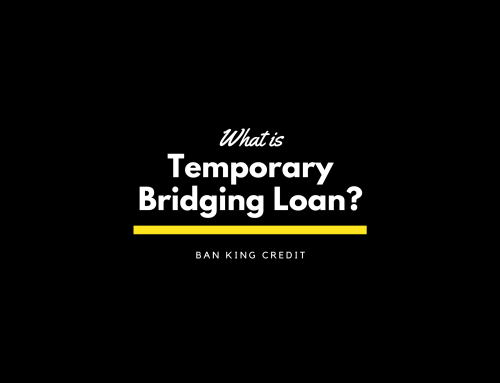Bridging loans have emerged as a vital financial tool for property investors and Small and Medium Enterprises (SMEs), offering immediate access to funds that can bridge temporary cash flow gaps. In this comprehensive guide, we’ll walk you through everything you need to know about bridging loans in Singapore, from how they work and the different types available to the application process, risks, and more.
Exploring Bridging Loans
A bridging loan is a type of short-term financing that helps borrowers to ‘bridge’ financial gaps against the quick sale or purchase of an asset, such as real estate. These loans are incredibly useful when timing is critical, and a borrower needs immediate funds to secure a transaction while awaiting funds from the sale of another property or any other pending financial arrangement.
How Bridging Loans Work
Upon application and subsequent approval, the borrower receives the agreed-upon amount, often within days, which can then be used for the intended purchase or investment. Repayment of the loan happens in full, including any interest and fees accrued, once the borrower’s primary source of finance is accessible. The short-term nature of bridging loans means that they typically last for a few weeks to a few months, with high-interest rates due to their speed and convenience.
Eligibility Criteria for Bridging Loans
Eligibility for a bridging loan in Singapore often includes:
- Proof of employment or business operation
- A clear exit strategy, usually through the sale of a property
- Good credit standing
- Sufficient equity in the primary security to cover both the existing mortgage and the proposed bridging loan
Benefits of Bridging Loans
The most significant benefit of a bridging loan is the speed of acquisition, which can make or break a deal in competitive markets. These loans also allow flexibility for borrowers, making them especially attractive to those involved in real estate or SMEs where agility can mean securing a profitable deal. Furthermore, bridging loans may come with relatively fewer restrictions regarding the purpose of the loan, as long as there’s a clear exit strategy in place.
Types of Bridging Loans in Singapore
Closed Bridging Loans
This loan type has a fixed repayment date, as the borrower has a clear timeline in place for the sale of an existing property and the completion of the transaction for the property they intend to purchase. A closed bridging loan may have lower interest rates since the risk for the lender is relatively low.
Open Bridging Loans
Open bridging loans do not have a fixed repayment date, making them more risky for lenders. This type of loan may be suitable for borrowers who are uncertain about when they will secure long-term financing, such as in cases where a property’s sale
Open Bridging Loans
Open bridging loans are more flexible, as they do not require a specific repayment date but tend to be more expensive due to the uncertainties involved.
Open bridging loans cater to borrowers who may not have a fixed date for when they can repay the loan, often because they are waiting for the sale of their property to go through or for approval on long-term financing options.
This type of loan provides critical flexibility, allowing individuals to proceed with purchasing new property or invest in business opportunities without delay. However, the increased risk to lenders from the uncertainty of repayment timing means these loans usually carry higher interest rates compared to closed bridging loans.
Additionally, lenders may require more stringent proof of a viable exit strategy and solid evidence of the pending sale or financing arrangement that will eventually cover the loan.
Auction Finance Bridging Loans
Specialized for those participating in property auctions, this type of loan provides financing to secure the property initially, with the intention of refinancing or reselling the property quickly.
Auction Finance Bridging Loans are a boon for investors looking to rapidly acquire properties at auctions, where traditional financing methods are too slow to meet the stringent deadlines. These short-term loans can be arranged quickly, often within days, providing the immediate funds needed to complete the purchase. This speed enables buyers to take advantage of auction opportunities without the risk of losing out due to funding delays.
However, it’s essential for borrowers to have a clear exit strategy, as these loans also come with higher interest rates due to their short-term nature and expedited processing. The ability to act quickly in competitive auction environments, backed by Auction Finance Bridging Loans, can make a significant difference in a buyer’s success in securing desired properties.
Optimal Bridging Loan Choice
Deciding on the best type of bridging loan largely depends on the borrower’s specific situation and financial strategy. However, among the mentioned types, Auction Finance Bridging Loans stand out for those looking to invest in real estate through auctions. The primary advantage of this loan type is its lightning-fast processing, which is crucial in the fast-paced and competitive environment of property auctions. It addresses the fundamental challenge of securing funds on short notice to capitalize on auction opportunities without delay. While the higher interest rates and the necessity of a clear exit strategy are considerations that borrowers must account for, the ability to swiftly secure properties can significantly outweigh these costs, especially for seasoned investors with a track record of successful quick flips or refinancing.
Choosing the Right Bridging Loan Provider
Selecting the right provider is crucial to a successful bridging loan experience. A reputable provider, like Ban-King Credit, should offer transparent terms, competitive interest rates, and exemplary customer service. When choosing a provider, it’s essential to consider their track record, customer testimonials, and whether they are licensed by the Registry of Moneylenders in Singapore. Additionally, it’s wise to shop around and compare offerings from multiple providers to ensure you’re getting the best deal. Remember that while speed is crucial in auction environments, it’s still essential to thoroughly research and consider all options before committing to a loan.
Application Process for Bridging Loan
Documents Required for Bridging Loan Application
The documentation needed for a bridging loan application in Singapore may include:
- NRIC/Passport
- Income Tax Notice of Assessment
- Proof of residence
- Bank statements
- Latest property notice and mortgage statement
Repayment Options for Bridging Loans
Repayment options for bridging loans can vary but often include the following:
- Sale of existing property and purchase of the new asset
- Refinancing of the bridging loan into a term or mortgage loan
- Use of other sources of liquidity
Risks and Considerations
While bridging loans offer speed and flexibility, they do come with risks. The primary risk is the requirement for a clear exit strategy and the success of that strategy, particularly in volatile markets. Borrowers must be prepared for potentially high interest rates and additional fees associated with the loan.
Another significant risk entails the possibility of overestimating the value of the current property or underestimating the time it would take to sell it. This miscalculation can result in financial strain should the proceeds from the sale be insufficient to cover the loan repayment. Additionally, borrowers should also be wary of potential changes in interest rates during the loan term. An increase in interest rates could considerably raise the cost of the loan, impacting the borrower’s ability to repay. It’s crucial for potential borrowers to conduct thorough market research and have a realistic understanding of their financial situation and market dynamics before committing to a bridging loan.
Another overlooked risk is the legal and administrative complexities that can delay the sale or refinancing processes. These delays could lead to penalties or even a default on the bridging loan, putting the borrower’s assets at risk. It’s important for those considering bridging loans to have contingency plans in place and seek professional advice to mitigate these risks.
Pros and Cons of Bridging Loans
Pros
- Quick access to funds
- Flexibility in usage
- Can be a competitive edge in property markets
Cons
- Potentially high-interest rates
- Requires a clear and successful exit strategy
- Can become expensive if the sale/purchase process is delayed
Final Thoughts on Bridging Loans
For property investors and SMEs in Singapore, bridging loans can be invaluable. However, they should be viewed as a financial product that requires careful consideration and planning. By understanding the various aspects of bridging loans, from the application process to repayment, borrowers can leverage these fast cash solutions to their advantage.
Conclusion
In conclusion, the strategic use of bridging loans can be a game-changer for those looking to make swift property transactions or needing quick finance to seize opportunities. While they offer the benefits of speed and flexibility, the significance of being well-informed about their risks, costs, and exit strategies cannot be overstated. It’s imperative for potential borrowers in Singapore to approach bridging loans with a clear plan and ensure they align with their financial goals to leverage these instruments effectively and responsibly. With the right approach and professional guidance, bridging loans can be a powerful tool for property investors and SMEs to achieve their objectives.
So, it is essential to carefully assess all factors before considering a bridging loan and always seek advice from experts. As with any financial decision, being well-informed and cautious is crucial for success. While there are risks involved, bridging loans can be a valuable resource for those in need of quick and flexible financing.
Additionally, borrowers should always have a clear exit strategy in place to ensure they can repay the loan promptly and avoid any potential financial difficulties. With proper planning and responsible use, bridging loans can provide the necessary bridge to success for property investors and SMEs in Singapore.
FAQs
- What is a bridging loan in Singapore?
A bridging loan in Singapore is a short-term financing option designed to help individuals or businesses bridge the gap between the purchase of a new property and the sale of an existing one. It provides quick, temporary financial support during transitional periods.
- How does a bridging loan work in Singapore?
In Singapore, a bridging loan gives you immediate access to funds for the down payment of a new property before the sale proceeds from your existing property are available. This loan is typically secured against your current property and is meant to be repaid in full once the property is sold.
- How to calculate a bridging loan?
Calculating a bridging loan involves determining the amount needed to bridge the financial gap, factoring in the purchase price of the new property, the amount remaining on the existing mortgage, and the expected proceeds from the sale of the current property. Loan interest rates and fees should also be considered.
- What is a bridging loan?
A bridging loan is a type of short-term finance intended to cover the interval between two transactions, typically the purchase of one property and the sale of another. It provides immediate cash flow and is usually secured by real estate assets.






